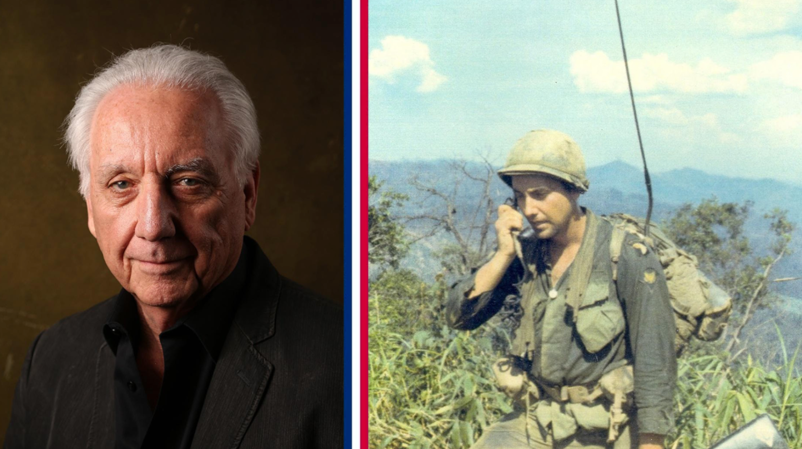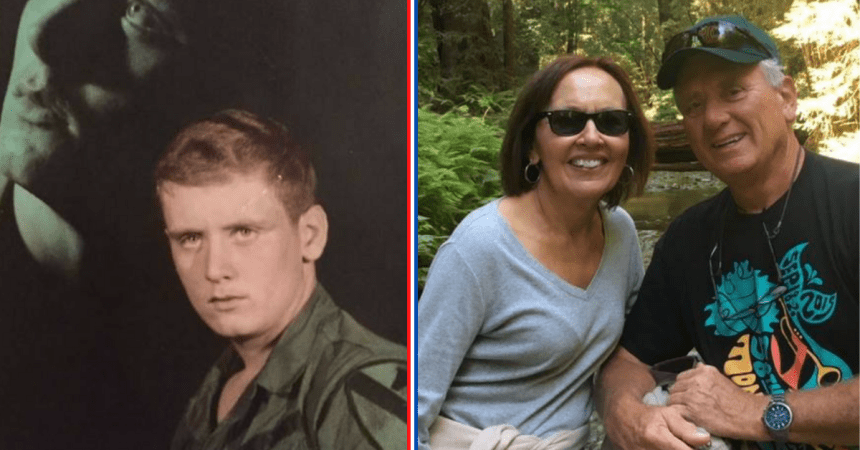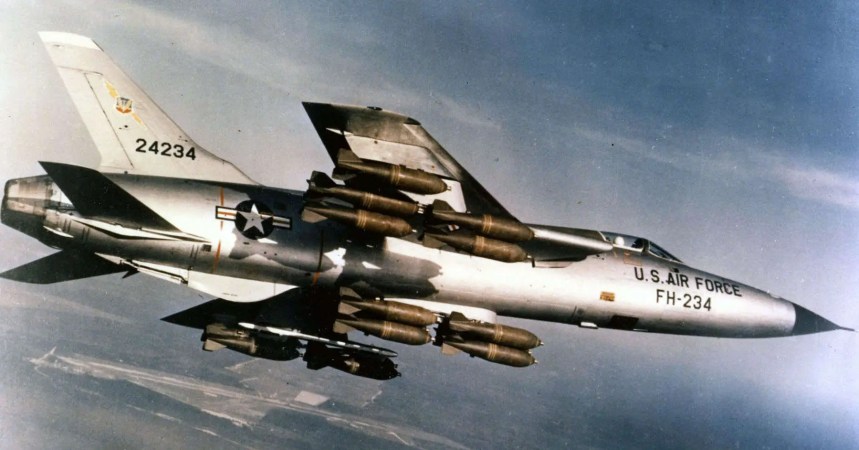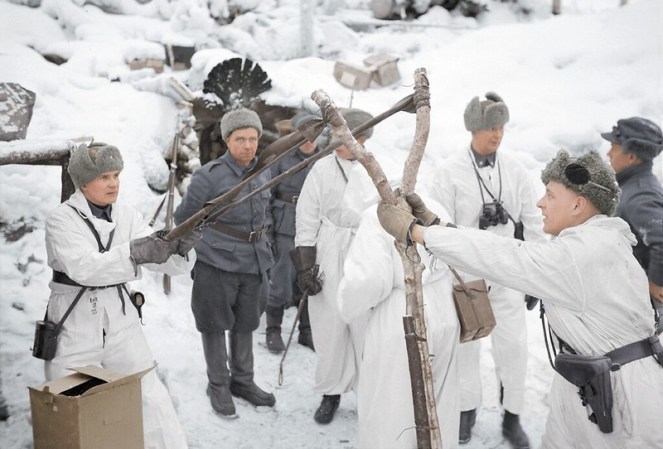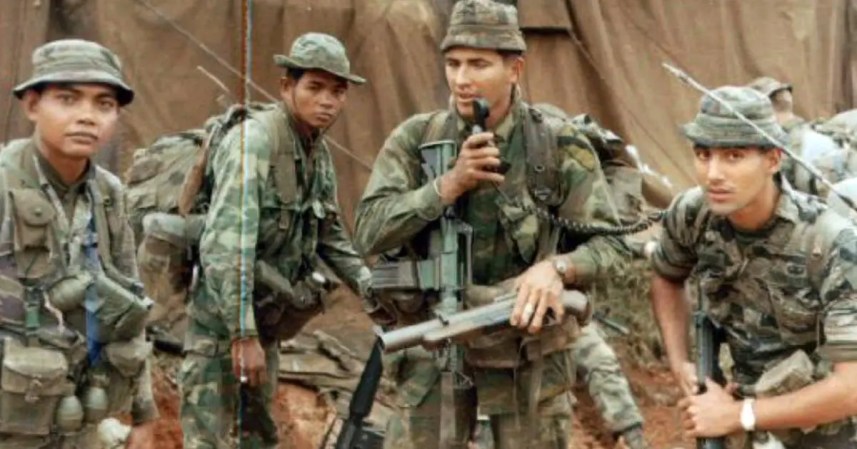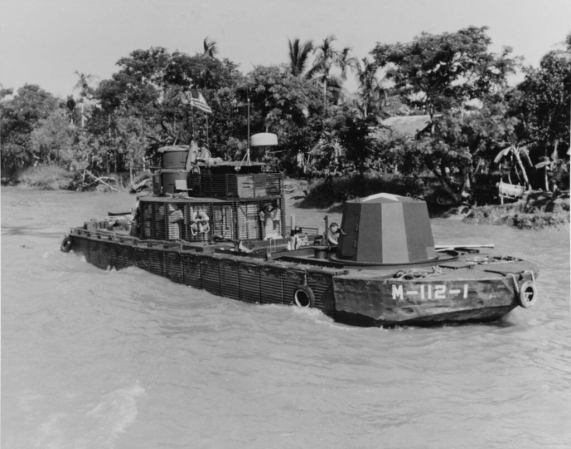Combat medics courageously fought to save lives as the war raged around them in Vietnam. Helicopters became virtual hospitals in the air, buying the combat medic valuable time to heal the wounded. When lives were on the line, it was a combat medic’s quick thinking that determined the fate of their fellow troop.
Max Cleland, who would later go on to be a US Senator, was saved by such courageous men after losing three limbs to an explosion. This is his story:
You might be wondering — what did these brave ‘docs’ carry with them on a daily basis? They played a vital role in operations, but you just might be surprised by the scarcity of their toolkit. Here’s what they were expected to carry on patrol.

Hospital Corpsman James Kirkpatrick (my handsome dad, on the right) gearing up to head out on patrol in Vietnam, 1968.
Armor?
No such luck.
For the most part, the ground-pounders wore t-shirts, flak jackets, and many donned WW2-style helmets due to a lack of budget.
The helmets weren’t bullet-proof and were only intended to protect the troop from flying shrapnel — sometimes it worked, sometimes it didn’t.
Primary weapon system
Just like today, the docs of Vietnam served as riflemen until one of their brothers was injured. Most Corpsmen and medics carried M16A1 rifles with 10-14 magazines of 18 rounds. Their magazines could carry up to 20 rounds, but the majority of the grunts didn’t fill them to capacity in order to avoid a weapons malfunction.
Sidearm
The average doc carried a .45 caliber pistol with five to seven magazines of seven rounds each.

Medics SP4 Gerald Levy and Pfc. Andrew J. Brown with a wounded soldier and a paratrooper of the 173rd Airborne Brigade, Bien Hoa, Vietnam.
(Photo by Horst Faas)
Other gear
Docs also carried three to five hands grenades, which were worn either on the flak jacket or stuffed into cargo pockets, two to five flares to properly mark landing zones, and a “woobie” or poncho to stay as dry as possible.
And, of course, you couldn’t go on patrol without bringing enough packs of smokes to last you the duration. In the Vietnam era, patrols could last up to several days, depending on the mission.
Also, just like good docs today, they didn’t forget to stash away plenty of dry pairs of socks.
An unmarked med-bag
These green pouches were stuffed to the brim with abdominal dressings (large bandages), battle dressings (medium-sized dressings), four to five rolls of gauze, and five to ten morphine syrettes.
Today, morphine syrettes are considered serialized gear and a medic can be punished for losing one in the field.
Fluids
Some corpsmen and medics carried an I.V. solution — if they could manage to hustle a bag or two away from the local medical aid station. In some cases, medevac helicopters would transport them to the on-ground medical personnel instead, as needed.





